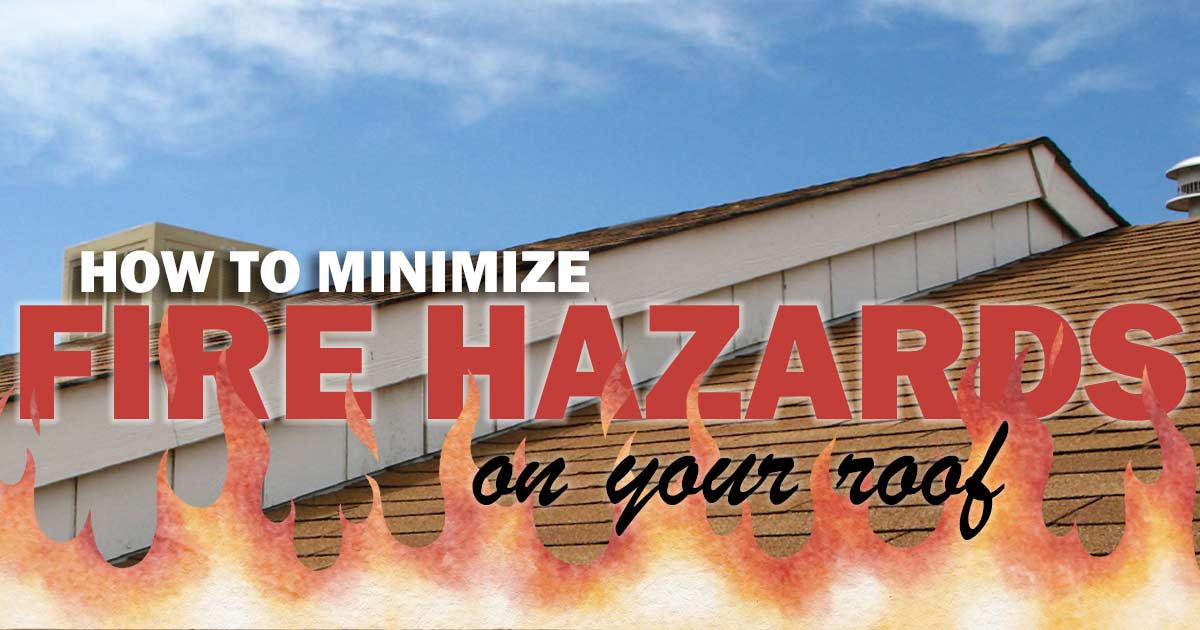How to Minimize Fire Hazards on Your Roof
Published: 11/13/2023

While Florida’s weather tends to be on the moist side, roof fires can still happen under certain conditions. Luckily, homeowners can take some really easy steps to stop roof fires from happening. What’s more, they’re probably things you’re already doing. In case you’re not, review this list to make sure you’re protecting your home from very preventable harm.
1. Choose Fire-Resistant Roofing Materials
Consider using fire-resistant options such as metal, clay or concrete tiles, asphalt shingles with a Class A fire rating, or composite materials designed to withstand flames and heat. These materials can significantly reduce the risk of your roof catching fire.
2. Install Fire-Resistant Roof Underlayment
In addition to the roofing materials themselves, consider using a fire-resistant roof underlayment. This extra layer of protection can provide an added barrier against embers and flames.
3. Regular Roof Maintenance
Regular roof maintenance is key to not only preventing fire hazards but also mold, rot, and leaks. Keep your roof clean and free from leaves, branches, and other debris, and trim overhanging tree branches to ensure they are a safe distance from your roof.
4. Perform Gutter Maintenance
Clogged gutters, which are known to contribute to roof leaks over time, can also become a fire hazard if the weather becomes dry. Ensure your gutters are clear of buildup, and regularly inspect and clean your gutters to reduce this risk.
5. Install Spark Arresters
Spark arresters (chimney caps) can be attached to the top of chimneys to help prevent sparks and embers from escaping and landing on your roof. If you have a fireplace, make sure you have these installed. Regularly inspect and clean these devices to ensure they function properly.
6. Maintain Proper Ventilation
Adequate ventilation can help prevent the buildup of heat and smoke, both of which can foster an environment conducive to fires. Ensure that vents and openings are not obstructed and that they meet local building codes.
7. Fire-Resistant Eave and Soffit Materials
Eaves and soffits are typically made of wood, which makes them vulnerable to embers and flames. Consider using fire-resistant materials like treated lumber or fiber cement board to protect these areas.
8. Create a Defensible Space
Creating a defensible space around your home can help protect it from external fire threats. Remove dead or dried vegetation, debris, and other fire hazards from the immediate vicinity of your home to create a buffer and reduce the risk of a fire reaching your property.
9. Regular Inspections
Regularly inspect your roof (or have it inspected by a pro) for any damage or signs of wear and tear. Address any issues promptly to ensure that your roof remains in good condition and maintains its fire-resistant properties.
Minimizing fire hazards on your roof is crucial for protecting your home and loved ones. By following these tips, you can significantly reduce the risk of a roof fire. Remember that preparation and prevention are your best tools in safeguarding your home from roof fire hazards.
If you’re in need of professional roof help, contact AKVM Roofing at 941-727-3996 to schedule your FREE consultation, inspection, and written estimate. We’re the roofing team you can count on for ALL of your roofing needs.
REQUEST A
FREE ESTIMATE
See What Our Customers Are Saying
Recent Posts
Choosing A Multi-residential Roofer
Choosing The Best Roofer
Energy Efficient Roofing Solutions
How Long Does It Take To Replace A Roof?
Debunking 10 Common Roofing Myths
2025 Roofing Tech & Trends
How To Choose Color For Tile Roof
What Is Drip Edge?
What Do Roof Vents & Penetrations Do?
How Roofs Impact Market Value